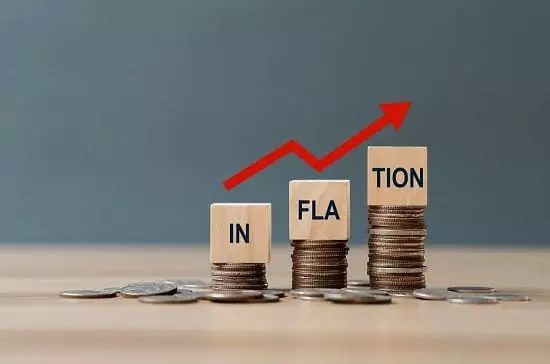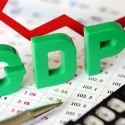What is Inflation, How To Calculate
Inflation is an increase in the general price level of goods and services in an economy over a period of time. When the general price level rises, each unit of currency buys fewer goods and services; consequently, inflation reflects a reduction in the purchasing power of money – a loss of real value in the medium of exchange and unit of account within an economy. A chief measure of price inflation is the inflation rate, the annualized percentage change in a general price index (normally the consumer price index) over time.
Inflation can be caused by a variety of factors, including an increase in the money supply, an increase in government spending, or a decrease in the supply of money due to a decrease in the production of goods and services. Inflation can have a number of negative effects, such as reducing the purchasing power of consumers and eroding the value of savings and investments. On the other hand, low and stable levels of inflation are generally seen as beneficial for an economy, as they can help to support economic growth and stability.
How To Calculate Inflation?

There are several ways to calculate inflation, but one of the most common methods is to use a price index, such as the Consumer Price Index (CPI). To calculate inflation using the CPI, follow these steps:
- Determine the time period you want to measure: Inflation is typically measured over a period of time, such as a month, quarter, or year. Choose the time period you want to measure.
- Select a basket of goods and services: The CPI is based on the prices of a basket of goods and services that are commonly consumed by households. The basket typically includes a wide range of items, such as food, housing, clothing, transportation, and healthcare.
- Determine the price of the basket of goods and services at the beginning and end of the time period: Find the prices of all the items in the basket at the beginning and end of the time period you are measuring.
- Calculate the percentage change in the price of the basket: To calculate the percentage change in the price of the basket, use the following formula:
(Price at end of time period – Price at beginning of time period) / Price at beginning of time period
- Multiply the percentage change by 100: This will give you the inflation rate as a percentage. For example, if the price of the basket increased by 2% over the time period you are measuring, the inflation rate would be 2%.
Keep in mind that this is just one method of calculating inflation, and there are other ways to do it as well. It’s also important to note that different price indexes, such as the Producer Price Index (PPI) or the Import Price Index (IPI), may use different baskets of goods and services and may yield different inflation rates.
How policymakers face inflation
There are several ways that policymakers can deal with inflation:
- Adjusting monetary policy: One of the most common ways to deal with inflation is through monetary policy, which refers to the actions taken by a central bank to influence the supply and demand of money in an economy. For example, if the central bank increases interest rates, it can reduce the demand for money and slow down the rate of inflation.
- Adjusting fiscal policy: Fiscal policy refers to the actions taken by the government to influence the level of spending and taxation in an economy. If the government increases taxes or reduces spending, it can help to reduce the demand for goods and services, which can in turn help to reduce the rate of inflation.
- Using price controls: Price controls are government-imposed limits on the prices that can be charged for certain goods or services. Price controls can be used to reduce the rate of inflation, but they can also have negative side effects, such as reducing the incentive for producers to supply goods and services and leading to shortages.
- Implementing structural reforms: Structural reforms refer to changes to the economic framework of a country, such as changes to the labor market or the financial sector. These reforms can help to increase the supply of goods and services, which can in turn help to reduce the rate of inflation.
Overall, the best way to deal with inflation depends on the specific circumstances of an economy and may involve a combination of these and other measures.



